Soy milk lasts between a couple of weeks and almost a year, depending on the variety. But it stays good for only up to a week after opening.
Like all popular milk alternatives (I’m looking at you, almond milk), handling soy milk is a bit tricky.
Some cartons sit in the refrigerated section, while the rest are in a different aisle next to shelf-stable dairy milk. And if you’re not familiar with aseptic packaging, you might be thinking, what’s the deal with that.
Then there are signs of spoilage. Everyone knows that old cow’s milk turns sour, but what about old soy milk?
If those questions have brought you here, and you want to learn more about storage practices, shelf life, and going bad of soy milk, you’re in the right spot.
Read on.
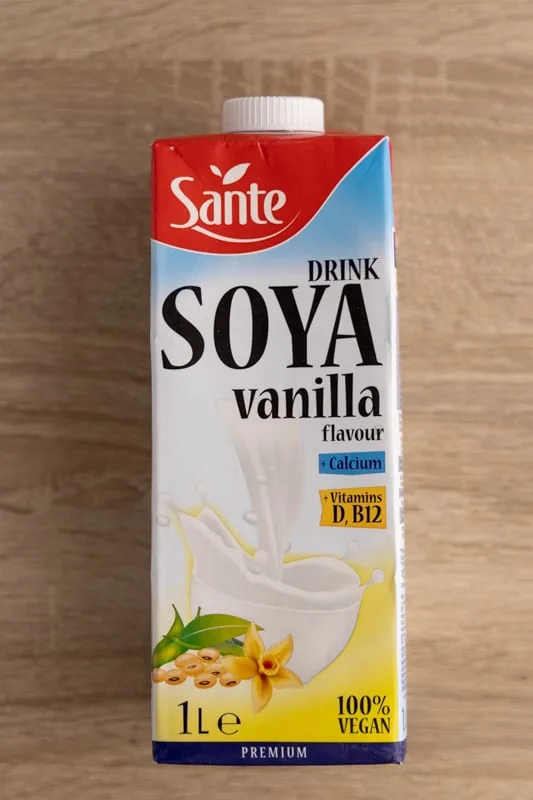
Does Soy Milk Need to be Refrigerated? Refrigerated vs. Shelf-Stable
Refrigerated soy milk must be in the fridge at all times, while shelf-stable soy milk requires refrigeration only after opening the container.
That’s the lowdown.
There are two types of soy milk available on the market: refrigerated soy milk and shelf-stable soy milk. The main difference between the two is packaging.
The shelf-stable variety is treated with ultra-high temperature (UHT) to extend its shelf life and sold in aseptic containers. These two combined make for a product that doesn’t require refrigeration until you open the carton.
You’re probably already familiar with cow’s milk sold in unrefrigerated cartons. The packaging process of shelf-stable soy milk is pretty much the same.
The refrigerated variety, as the name suggests, requires refrigeration at all times. It also has a much shorter shelf life.
To make sure which one you have, check the label. If it’s the refrigerated variety, it will surely say that.
Sometimes clerks in the supermarkets place shelf-stable soy milk in the fridges, just to keep soy-based products (like tofu) together. That means even if you picked up yours from the refrigerated section, it might still be a shelf-stable one.
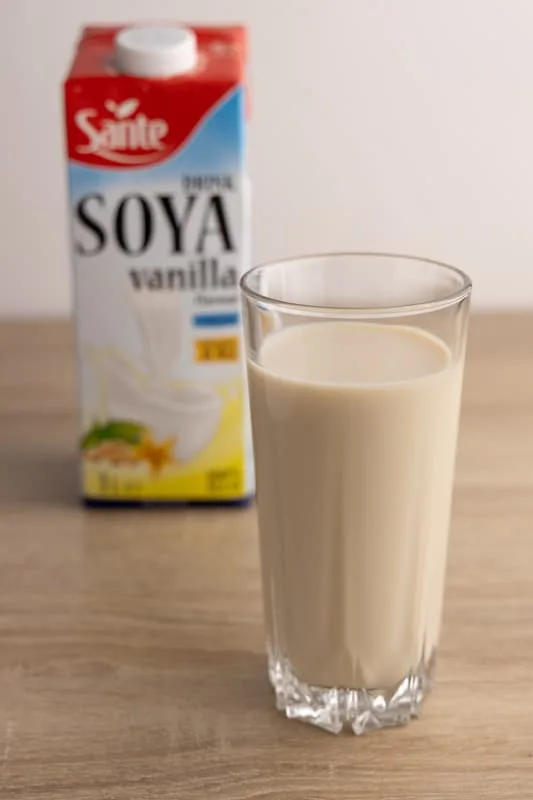
How To Tell If Soy Milk Is Bad?
Soy milk goes bad, and there’s no debating that. But that’s not a common thing to happen, and you might not know how to tell if yours is still safe to drink or not.
Here’s what to consider when checking if your soy milk is bad:
- Shelf life and storage time. If your soy milk sits around for way longer than it should, you should throw it out no matter if it shows any signs of spoilage or not. I have a whole section on this topic later on.
- Constainer issues. If the carton is bloated, punctured, or leaking, discard the milk alternative. Neither of these necessarily mean the milk is bad, but drinking it is risky.
- Weird smell. If the liquid smells unusual, funny, or “off” (e.g., like old eggs), it’s time for it to go. The non-dairy milk should smell fresh and soy-like, or the way the flavor suggests if you opted in for a flavored variety.
- Visual changes. Pour half a glass and take a closer look at the liquid. If the color has changed, the liquid isn’t smooth (seems chunky), or is lumpy, it’s no good.
- Off taste. If everything else seems okay, but your soymilk doesn’t quite taste right, it needs to go.
Last but not least, if you’re not 100% sure the liquid is okay to drink, it’s best to discard it. When in doubt, throw it out.
A bit of separation is normal in soy milk. That’s why most labels say “shake before use.”
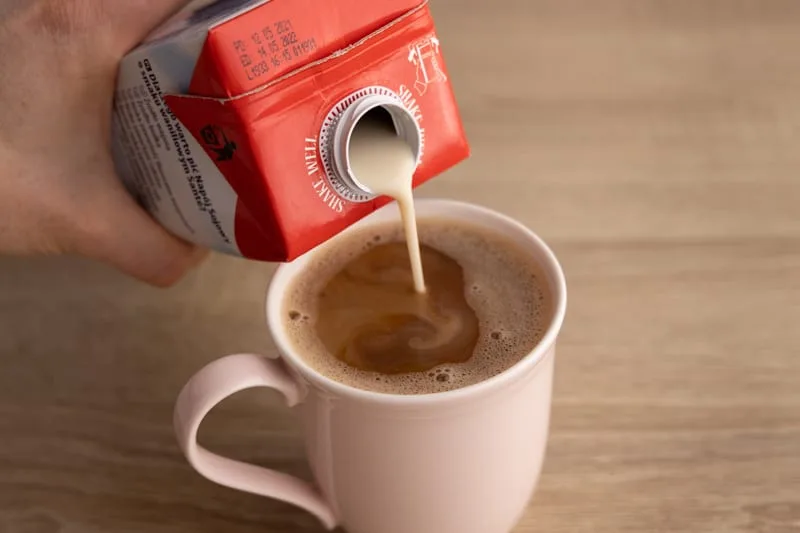
How Long Does Soy Milk Last?
Shelf-stable soy milk has a shelf life of about a year and keeps quality for at least a month past its date, while the refrigerated variety has a shelf life of a few weeks, and lasts for an extra week or so past it. Both keep for 5 to 7 days of opening the container.
Those suggestions work for oat, coconut, and almond milk as well.
Keep those basics in mind as we go forward.
After Opening
Once you open your soy milk container, it keeps for about 5 to 10 days if refrigerated and sealed tight. The recommendation is the same for both shelf-stable and refrigerated soy milk.
The specific periods depend on your brand of choice.
Some brands, like Alpro, keep it safe and suggest using their soy milk within 5 days. Others, like Silk, go with a bit looser guidelines of 7 to 10 days. Again, check the label to learn what your brand says about the topic.
My recommendation is to stick with the 5 to maybe 7 days of storage after opening the carton. It’s quite a long period already, as it’s longer than the standard 4 to 5 days of storage for leftovers that require refrigeration.
If the mentioned period isn’t long enough for your needs, consider freezing the leftovers. More on that later.
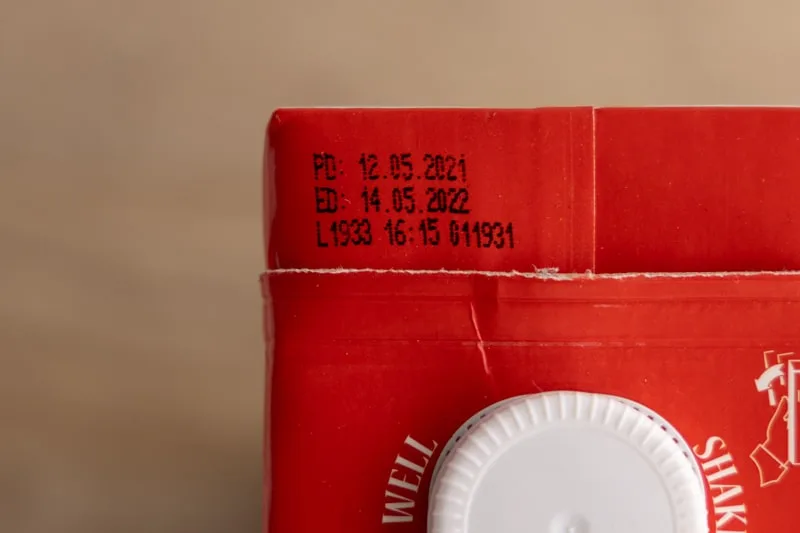
After Expiration Date
The printed date on a soy milk container isn’t an expiration date, but rather a best-by (for shelf-stable) or use-by (for refrigerated variety) date. Those dates are about food quality, not safety.
In other words, brands cannot guarantee the quality of the drink after the printed date, but it doesn’t mean that the product is spoiled.
Shelf-stable soy milk lasts for 10 months to about a year, so it’s not a stretch to assume that it should keep quality for an additional month or so past its date. Maybe even a couple of months.
With UHT pasteurization and aseptic packaging, it’s not that common for an unopened out-of-date soy milk container to go bad (as in going moldy or sour). What’s much more likely to happen is that its quality won’t be all that great.
In short, if you’re okay with drinking soy milk that’s a few months past its date and doesn’t show any signs of spoilage, feel free to do so.
When it comes to refrigerated soy milk, its shelf life is pretty limited, so you shouldn’t expect miracles here. A week past the printed date seems reasonable.
Sitting Out
If you accidentally left out soy milk, you might be wondering how long it can sit out at room temperature.
The official recommendation is that perishable products, such as soy milk, shouldn’t sit out of the fridge for more than 2 hours. It’s also known as the 2-hour rule.
When it comes to following that guideline, I think it’s all about common sense.
If your refrigerated soy milk is still unopened, and you left it on the counter for 3 hours because you missed it when organizing your groceries, it should be just fine. But if you left it out overnight, it’s better to err on the side of caution and pour it down the drain.
Of course, it’s up to you if you follow the 2-hour rule of thumb to a T or not. I don’t.
All of the above doesn’t apply to shelf-stable soy milk that’s still unopened, obviously.
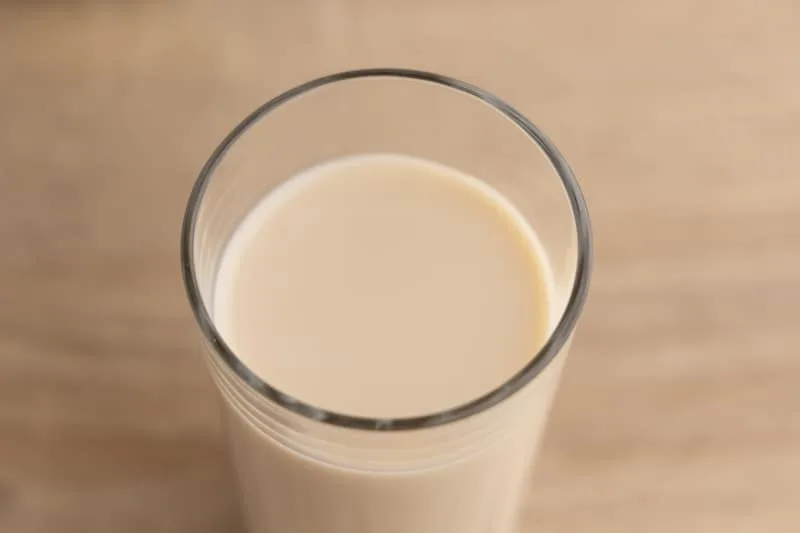
How To Store Soy Milk
Unopened shelf-stable soy milk should sit in a cool and dry place, away from heat sources, while the refrigerated variety needs to chill in the fridge.
Once you open the container, you should seal it tight and return the leftovers to the fridge, no matter the variety.
Most cartons are resealable, so storing what’s left isn’t usually an issue. But if yours isn’t, pour the leftovers into an airtight container, and seal it. This way, you protect the liquid from any bacteria in the fridge and from absorbing any odors.
Last, don’t drink soy milk straight from the container.
I know it’s super convenient just to grab the carton, take a few sips, and promptly return it to the fridge. There’s no cleanup involved, and all of that. You don’t even need to chunk the glass into the dishwasher.
But that’s also a surefire way to transfer any microbes from your mouth to the dairy-free drink. And those microbes might spoil your soy milk prematurely, which you probably don’t want.
Can You Freeze Soy Milk?
You can freeze soy milk, but it separates quite heavily after thawing. The texture change is apparent, and the defrosted liquid isn’t good enough as a standalone drink.
Of course, you can stir thawed soy milk or even use a blender or a food processor, but it only helps a bit. The soy milk looks better after that treatment, but it’s still a far cry from fresh soy milk that’s smooth and silky.
If you’re using soy milk as a coffee creamer, the same thing. The coffee with floating chunks would be pretty disgusting, at least to me.
But that doesn’t mean that soy milk is utterly useless after freezing. It’s not.
Defrosted soy milk is okay to use in any dishes that involve cooking or baking. Things like pancakes, muffins, or any other baked goods come to mind.
In those, the separation doesn’t really affect the texture of the final dish, and that’s exactly what we’re looking for.